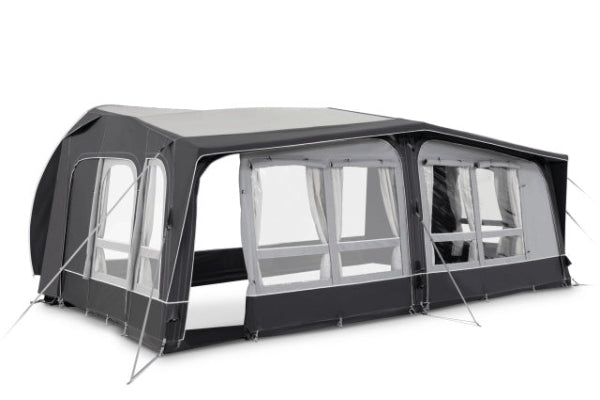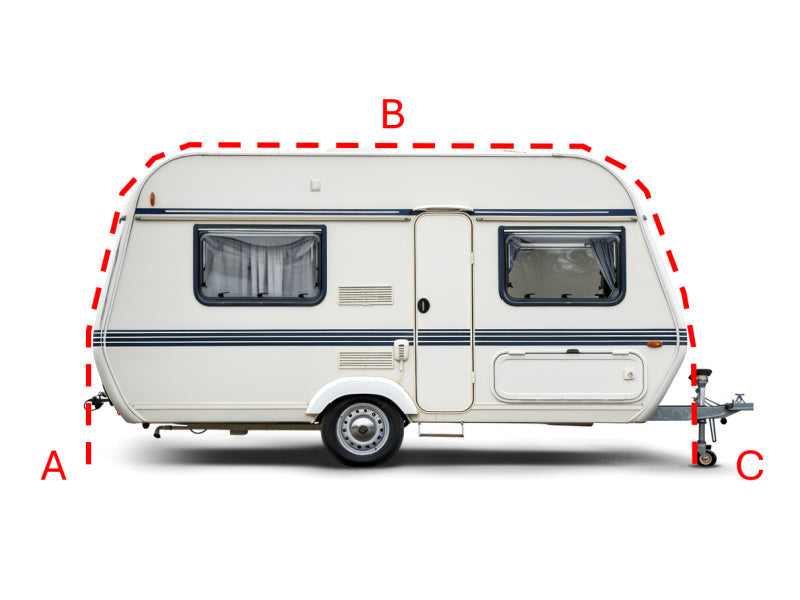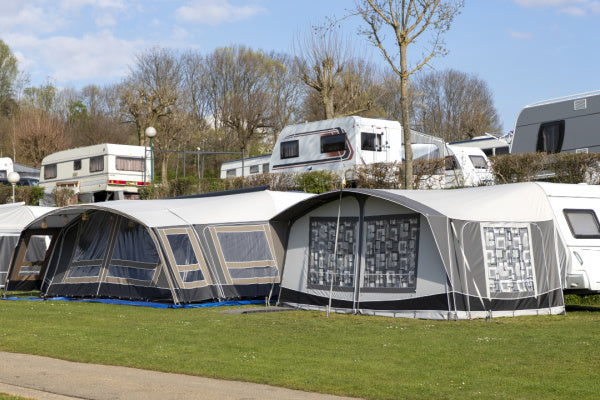How to Peg a Caravan Awning: The Complete Guide
Ever watched caravan awnings flapping away merrily at a campsite, much to their owner's annoyance? We've all been there! Here's the quick fix: Secure corner pegs first at 45°, then work your way around using appropriate pegs for your ground type. Master this essential camping skill for peaceful, flutter-free holidays.

How to Peg a Caravan Awning
Ever watched caravan awnings flapping like distressed seagulls at a campsite? We've all been there! Here's the quick fix: Secure corner pegs first at 45°, then work your way around using appropriate pegs for your ground type. Master this essential camping skill for peaceful, flutter-free holidays.
Choosing the Right Pegs
Selecting the right pegs stands as the cornerstone of a secure awning setup. Different terrains demand specific peg types, and making the wrong choice could lead to a midnight rescue mission in stormy weather.
Ground conditions change dramatically with weather and location. What works perfectly on a Welsh mountainside might fail spectacularly on a coastal campsite. Smart campers pack various peg types to handle any situation they might encounter.
Rock Pegs
Rock pegs shine when the ground fights back. These robust warriors feature reinforced heads and sturdy construction, ready to tackle the toughest terrain.
Their distinctive design includes a thicker shaft and usually a T-bar or V-shaped head for hammering. When standard pegs bend and surrender, rock pegs stand firm against compacted soil and stony ground.
Most rock pegs come with serrated edges that grip the soil with remarkable tenacity. This extra gripping power proves invaluable when camping on slopes or in areas with loose topsoil over harder ground.
Screw-In Pegs
Screw-in pegs transform the chore of securing an awning into a surprisingly satisfying task. Their spiral design creates a powerful hold in medium to soft ground, working like a cork-screw through the soil.
These clever pegs excel in grassy areas where the ground has good consistency. Their design allows them to thread between grass roots, creating multiple anchor points for superior stability.
Installation requires a different technique from traditional pegs. Rather than hammering, users twist these pegs into place, reducing soil disturbance and creating a more reliable anchor point.

Hurricane Pegs
Hurricane pegs mean business. Their extra-wide heads and extended shafts distribute force across a broader area, making them the go-to choice for challenging weather conditions.
These pegs really prove their worth in exposed camping locations where wind gusts can test every aspect of an awning's security. Their design allows them to maintain grip even when the ground becomes saturated after heavy rain.
Pegging Techniques
Mastering proper pegging techniques transforms a wobbly setup into a bomb-proof shelter. The right approach prevents common issues like sagging fabric and loose guy lines.
Smart pegging starts with understanding the forces at play. Wind doesn't just push against an awning - it creates lift, much like an airplane wing. Proper technique counteracts these forces effectively.
Guy Line Tension
Guy lines do more than just hold an awning in place. They create the shape and stability that allows an awning to shed wind and rain effectively.
Proper tensioning requires understanding the balance between too tight and too loose. Guy lines should feel firm but maintain some flexibility, allowing the structure to move slightly in strong gusts without stressing the fabric.
Creating a Balanced Tension
Balance forms the key to effective guy line setup. Start at the corners and work methodically, adjusting opposite sides in turn.
Think of an awning like a drum skin - uneven tension creates weak spots and stress points. Working systematically ensures even distribution of force across the entire structure.
Regular tension checks throughout a camping trip help maintain optimal performance. Weather changes can affect guy line tension, requiring occasional adjustments to maintain stability.
Avoiding Over-Tensioning
Over-tensioning ranks among the most common mistakes in awning setup. Excessive tension stresses both the fabric and fixing points, potentially leading to damage.
The goal is to achieve firmness without creating rigid points that can't flex in the wind. A properly tensioned awning should feel taught but still have some give when pressed gently.

Pegging Points
Strategic peg placement makes the difference between a stable setup and a potential disaster. Understanding where to position pegs and at what angle maximises their holding power.
Think about peg placement like building a house - the foundation needs to be rock solid. Each peg should work in harmony with its neighbours to create a stable structure.
Strategic Placement for Stability
Corner pegs deserve special attention as they bear the brunt of wind forces. Position these crucial anchors at 45-degree angles, pointing inward toward the awning's centre.
Work systematically around the awning's perimeter, maintaining consistent angles and tension. This methodical approach ensures no weak points develop in the overall structure.
The ground immediately around pegging points needs careful attention. Clear away loose debris and vegetation that might interfere with the peg's grip on the soil.
Using Extra Pegs for Reinforcement
When conditions turn challenging, adding reinforcement pegs can provide crucial additional stability. Place these between primary pegging points where extra support seems necessary.
Extra pegs prove particularly valuable in areas experiencing variable wind conditions. They create redundancy in the securing system, ensuring stability even if individual pegs start to work loose.
Consider adding diagonal guy lines with additional pegs in very windy conditions. These extra anchor points help prevent the awning from shifting or twisting in gusty weather.
Remember to check all pegging points regularly throughout a camping trip. Ground conditions can change with weather, and early intervention prevents potential problems from developing into real issues.
This comprehensive approach to awning security might seem excessive on a calm summer day. However, experienced campers know that weather can change rapidly, and a well-secured awning provides peace of mind whatever conditions might develop.
Other content you might like:
- Caravan awning size guide and calculator
- How to open a caravan awning
- How to tension caravan awning
- Caravan awning setup guide
- Caravan awning layout ideas
- Caravan awning instructions manual
- Caravan awning essentials
- How to pack away a caravan awning
- How to get an awning tight to a caravan
- How long does it take to put a caravan awning up?






Leave a comment